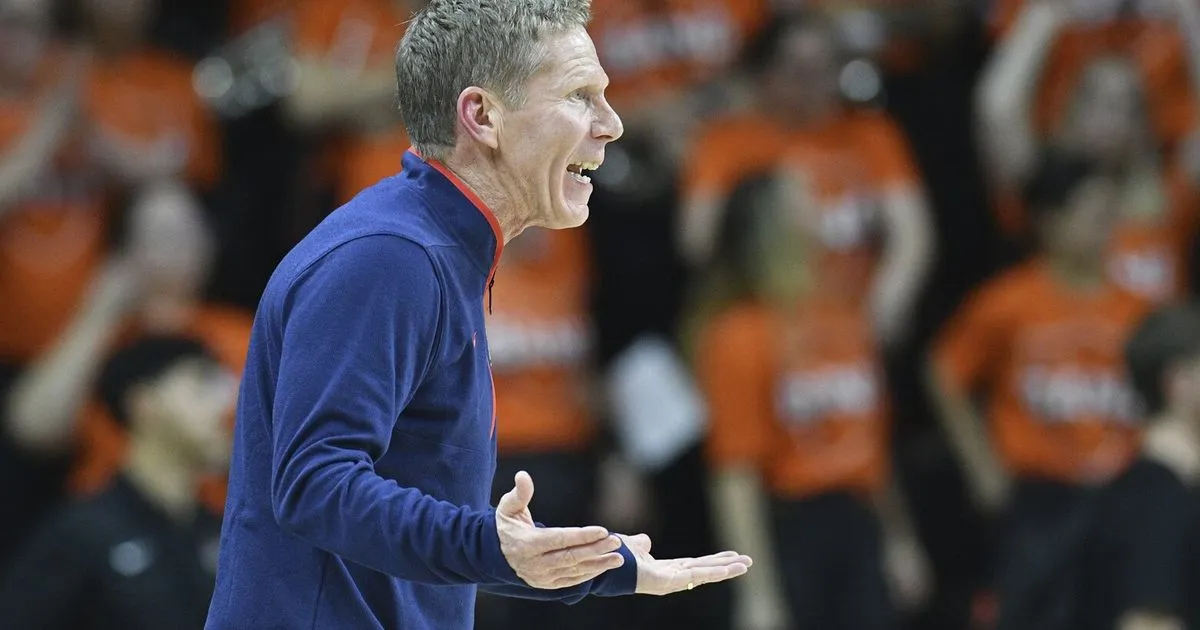
The NCAA tournament selection committee recently made headlines for its controversial decision to include the North Carolina Tar Heels in the 68-team field. This choice raised significant questions, especially considering the Tar Heels' dismal record of just 1-12 in Quadrant I games, which are supposed to carry substantial weight in the selection process. The unveiling of the final at-large spot turned into a spectacle, drawing attention not only to the pick itself but also to the circumstances surrounding it.
During the selection show on CBS, the committee chair, Bubba Cunningham, was brought on screen to address the decision regarding North Carolina. However, viewers were left perplexed as Cunningham, who serves as the athletic director for the Tar Heels, was unable to comment on this controversial choice due to his dual role. By rule, he recused himself from any discussions or voting that involved his own institution, leaving the vice chair, Keith Gill, to explain the committee's rationale.
The optics of the situation were less than favorable, highlighting the ongoing issue of conflicts of interest within collegiate sports selection committees. This incident echoes past criticisms regarding the College Football Playoff committee, where athletic directors have also been found to hold significant sway over selection decisions, leading to potential biases.
While the Cunningham controversy attracted attention, the more significant narrative from Selection Sunday was the overwhelming dominance of two powerhouse conferences. The SEC secured a record-breaking 13 at-large bids, while the Big Ten garnered seven, making up a staggering 20 of the 37 at-large spots. In stark contrast, the remaining 29 conferences combined only managed to claim 17 bids.
This growing hegemony of the SEC and Big Ten, already apparent in college football, is beginning to seep into basketball. As the era of revenue sharing approaches, the financial might of these conferences positions them to build formidable rosters, further enhancing their chances for success in future tournaments.
The increasing influence of the SEC and Big Ten presents a challenge for the landscape of March Madness. With their capability to shape postseason access, particularly as they prepare for the College Football Playoff changes in 2026, the potential for transforming the NCAA tournament to favor their interests is considerable. As these conferences continue to dominate the selection process, their case for greater control will only solidify.
CBS deserves recognition for their heartfelt tribute to Greg Gumbel, who passed away from cancer at the age of 78. His legacy as the voice of this annual spectacle was honored aptly during the selection show.
Rick Pitino also emerged as a winner, leading St. John's to the NCAA tournament, marking his sixth different program to achieve this milestone. His coaching prowess continues to shine brightly in the world of college basketball.
The Mountain West conference saw a positive turn of events, as they secured a total of four bids, with Colorado State claiming the automatic bid and San Diego State snatching one of the final at-large spots.
On the flip side, the ACC found itself in a precarious position, managing only four bids despite its storied basketball history. The conference's recent struggles were starkly evident, particularly when compared to the Mountain West.
Gonzaga also faced disappointment, earning a No. 8 seed rather than the expected No. 7 after winning the West Coast Conference tournament. Their pairing with the No. 1 seed Houston in the second round poses a significant challenge.
As the tournament progresses, teams like Brigham Young and Seattle look promising, while others, such as Kansas, face uphill battles after receiving lower seeds than anticipated. The landscape of the NCAA tournament is ever-changing, and as selection controversies blend with conference dynamics, fans can expect an exhilarating March Madness ahead.